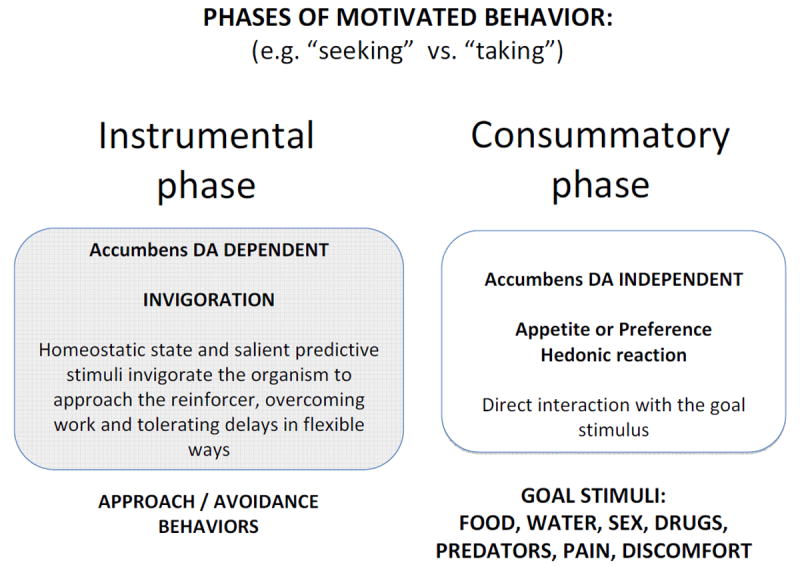Figure 2.

This figure emphasizes the dependence of some aspects of appetitive and aversive instrumental (i.e., seeking) behavior on nucleus accumbens DA transmission. Salamone (1991) noted that highly active instrumental behaviors elicited and supported by conditioned stimuli are very sensitive to disruption of accumbens DA transmission. Koob et al. (1978) reported that neurotoxic depletions of accumbens DA decreased behavioral activation, but actually tended to increase food consumption. Nicola (2010) emphasized the importance of accumbens DA for flexible approach to the reinforcing stimulus.
